- Accueil
- Pages cachées
- 08 DECEMBRE 2023 NEWS
08 DECEMBRE 2023 NEWS
INSTITUT SUPERIEUR D'ANTHROPOLOGIE
INSTITUT OF ANTHROPOLOGY
COURS ONLINE – COURS A DISTANCE
INSCRIPTIONS OUVERTES
REGISTER NOW
PEROU – 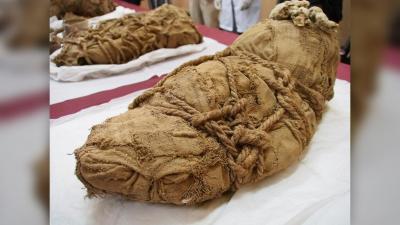
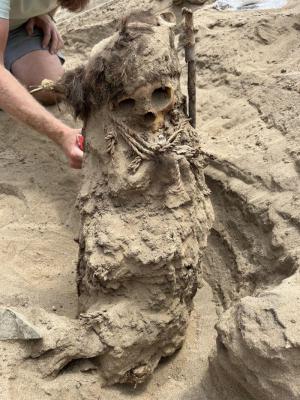 Barranca - The mummified burials of 22 people, mostly young children and newborn babies, were found in the Peruvian town of Barranca by a team of Polish-Peruvian scientists. In addition to the fabrics used to wrap the bodies of the dead, pottery, tools, and food remains were also found. The archaeological site where the discovery is located in Peru, on the outskirts of the city of Barranca on the Cerro Colorado hill in the Pativilca Valley. This place has been known to researchers for several decades. It currently consists of four mounds that cover pre-Columbian buildings. However, the time of their creation and functions remained unknown. “These are bodies wrapped in fabrics and plant material, which in archeology we call burial bundles. Examination of human remains, between the layers of these fabrics we find ceramics, tools, and cult objects” says bioarchaeologist Łukasz Majchrzak. Six of the discovered burial bundles belonged to adults, and the remaining 16 – located some distance away – belonged to children, most likely of different ages. – Until recently, high child mortality was standard, especially when a child was weaned. This is not always reflected in the archaeological material, because children were not always buried on equal terms with adults, but often there are more of them than adults. In the case of Cerro Colorado, what we are wondering is not the number, but the method of making and depositing the children’s bundles – comments Łukasz Majchrzak. As he describes, they are located at a similar depth, at the height of the heads of the deceased adults. They are all in a horizontal position, while the adults’ bodies are in the fetal position with their upper and lower limbs tucked under their chests. The adults’ bodies are arranged vertically, making them appear as if they were sitting. They all have a similar external appearance, are wrapped in thick fabric and entwined with rope. “At this point, it is difficult to give a single interpretation of this find. It is possible that the entire community simply buried children in this place. What is still puzzling is the fact that these are clearly children no older than 2 years old (judging by the length of the bundles), some of them certainly newborns or infants. It is possible that for some reason older children were buried in other parts of the cemetery,” Łukasz Majchrzak said. So far, the team has only examined an area of 20 square meters. Scientists unrolled one baby bundle in which a newborn was buried. – We subjected two more bundles to tomography, so we know that one of the children was slightly older, and the other was also a newborn – describes the bioarchaeologist. The fabric of one of the already-developed bundles is decorated with geometric patterns. The remaining bundles – as Majchrzak suggests – may contain representations of animals and gods. The materials in which the dead were wrapped were supposed to be useful in the afterlife. “In the Andean posthumous vision, a man travels for a year until he reaches his destination. So he needs food. We even found corn cobs and other unidentified plant materials in several of the bundles.” However, as for Andean graves, there were few vessels, 4-5 for each bundle – the researcher describes. Researchers will analyze subsequent burial bundles, which scientists tentatively date to 1000 – 1100 AD. These preliminary findings will be confirmed by radiocarbon dating. Scientists will use computed tomography to examine completely preserved burial bundles with no visible damage. It will allow for non-invasive anthropological analysis. In further stages, they plan to carry out chemical analyzes and isotope analysis, including the strontium isotope, which will clarify whether we are dealing with a local population.
Barranca - The mummified burials of 22 people, mostly young children and newborn babies, were found in the Peruvian town of Barranca by a team of Polish-Peruvian scientists. In addition to the fabrics used to wrap the bodies of the dead, pottery, tools, and food remains were also found. The archaeological site where the discovery is located in Peru, on the outskirts of the city of Barranca on the Cerro Colorado hill in the Pativilca Valley. This place has been known to researchers for several decades. It currently consists of four mounds that cover pre-Columbian buildings. However, the time of their creation and functions remained unknown. “These are bodies wrapped in fabrics and plant material, which in archeology we call burial bundles. Examination of human remains, between the layers of these fabrics we find ceramics, tools, and cult objects” says bioarchaeologist Łukasz Majchrzak. Six of the discovered burial bundles belonged to adults, and the remaining 16 – located some distance away – belonged to children, most likely of different ages. – Until recently, high child mortality was standard, especially when a child was weaned. This is not always reflected in the archaeological material, because children were not always buried on equal terms with adults, but often there are more of them than adults. In the case of Cerro Colorado, what we are wondering is not the number, but the method of making and depositing the children’s bundles – comments Łukasz Majchrzak. As he describes, they are located at a similar depth, at the height of the heads of the deceased adults. They are all in a horizontal position, while the adults’ bodies are in the fetal position with their upper and lower limbs tucked under their chests. The adults’ bodies are arranged vertically, making them appear as if they were sitting. They all have a similar external appearance, are wrapped in thick fabric and entwined with rope. “At this point, it is difficult to give a single interpretation of this find. It is possible that the entire community simply buried children in this place. What is still puzzling is the fact that these are clearly children no older than 2 years old (judging by the length of the bundles), some of them certainly newborns or infants. It is possible that for some reason older children were buried in other parts of the cemetery,” Łukasz Majchrzak said. So far, the team has only examined an area of 20 square meters. Scientists unrolled one baby bundle in which a newborn was buried. – We subjected two more bundles to tomography, so we know that one of the children was slightly older, and the other was also a newborn – describes the bioarchaeologist. The fabric of one of the already-developed bundles is decorated with geometric patterns. The remaining bundles – as Majchrzak suggests – may contain representations of animals and gods. The materials in which the dead were wrapped were supposed to be useful in the afterlife. “In the Andean posthumous vision, a man travels for a year until he reaches his destination. So he needs food. We even found corn cobs and other unidentified plant materials in several of the bundles.” However, as for Andean graves, there were few vessels, 4-5 for each bundle – the researcher describes. Researchers will analyze subsequent burial bundles, which scientists tentatively date to 1000 – 1100 AD. These preliminary findings will be confirmed by radiocarbon dating. Scientists will use computed tomography to examine completely preserved burial bundles with no visible damage. It will allow for non-invasive anthropological analysis. In further stages, they plan to carry out chemical analyzes and isotope analysis, including the strontium isotope, which will clarify whether we are dealing with a local population.
ESPAGNE – 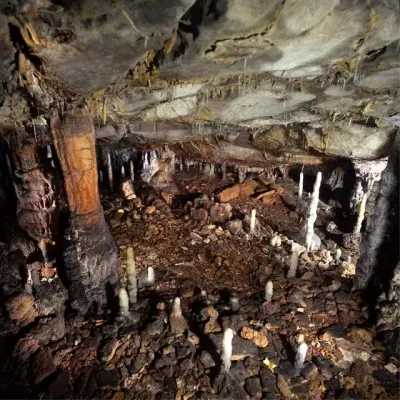 La Garma - Archaeologists have found a pre-historic cave-dwelling, thought to have been constructed 16,800 years ago. The discovery was made in the La Garma caves in Cantabria, Spain, which is famed for its artwork previously found on its walls. The University of Cantabria, whose prehistoric research team led the project, said it was “one of the best preserved Paleolithic dwellings in the world”. The home is described as an oval space of about five square metres with stone blocks and structures of “sticks and skins”. Researchers believe there was a small bonfire in the centre of the space, in which a multitude of daily tasks would have taken place. They believe a group of Magdalenian hunters and gatherers shared the space and they have documented 6,614 objects from the dwelling including deer, horse and bison bones as well as 600 pieces of flint, needles and shells of marine molluscs. Among the discoveries was a decorated bone and several pendants that researchers believe dwellers wore as jewellery. The research took two years of continuous work by an interdisciplinary team using innovative methodology such as non-invasive techniques such as 3D mapping, soil analysis, and radiocarbon dating.
La Garma - Archaeologists have found a pre-historic cave-dwelling, thought to have been constructed 16,800 years ago. The discovery was made in the La Garma caves in Cantabria, Spain, which is famed for its artwork previously found on its walls. The University of Cantabria, whose prehistoric research team led the project, said it was “one of the best preserved Paleolithic dwellings in the world”. The home is described as an oval space of about five square metres with stone blocks and structures of “sticks and skins”. Researchers believe there was a small bonfire in the centre of the space, in which a multitude of daily tasks would have taken place. They believe a group of Magdalenian hunters and gatherers shared the space and they have documented 6,614 objects from the dwelling including deer, horse and bison bones as well as 600 pieces of flint, needles and shells of marine molluscs. Among the discoveries was a decorated bone and several pendants that researchers believe dwellers wore as jewellery. The research took two years of continuous work by an interdisciplinary team using innovative methodology such as non-invasive techniques such as 3D mapping, soil analysis, and radiocarbon dating.
TURQUIE – 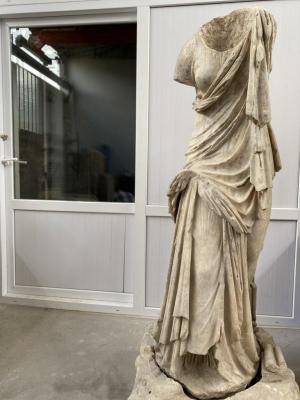 Stratonikeia, - The latest discovery in the ongoing excavations in the Ancient City of Stratonikeia, known as the city of eternal loves and gladiators, was a “Dancing Moses” statue, an iconic figure from ancient mythology. According to the statement made by the Ministry of Culture and Tourism, the statue found in the works carried out in the ancient city is this unearthed statue is the sole original Hellenistic period piece attributed to a work famously replicated during the Roman period. Historically, the “Dancing Moses,” considered one of the muses born from Zeus and Mnemosyne’s union, was reputedly crafted by Philiskos, a renowned sculptor from the second century B.C. While there are numerous Roman period reproductions of this piece throughout Anatolia and Greece, the newly discovered statue from Stratonikeia stands out as the only authentic work by Philiskos from the Hellenistic era. Information about Philiskos, the renowned sculptor from the Hellenistic Period, is quite scarce. Philiskos was known for his work in bronze sculpture, particularly in creating statues and sculptures of athletes and gods. He was active during the 4th century BCE and hailed from Rhodes, a center for artistic innovation during that era. Philiskos is often mentioned in historical records and texts for his mastery in portraying movement and anatomical accuracy in his sculptures. Unfortunately, none of his original works have survived, leaving us to rely on written accounts and references by other ancient authors to understand his artistic prowess and contributions to the field of sculpture during the Hellenistic Period. Therefore, the discovery of the statue in Stratonikeia is significant for archaeologists because it demonstrates Philiskos’ artistic presence in the ancient city during the Hellenistic period. The statue and pedestal were found during excavations inside the frigidarium of the Roman bath in Stratonikeia. However, the head and arms of the sculpture were notably absent from the findings.
Stratonikeia, - The latest discovery in the ongoing excavations in the Ancient City of Stratonikeia, known as the city of eternal loves and gladiators, was a “Dancing Moses” statue, an iconic figure from ancient mythology. According to the statement made by the Ministry of Culture and Tourism, the statue found in the works carried out in the ancient city is this unearthed statue is the sole original Hellenistic period piece attributed to a work famously replicated during the Roman period. Historically, the “Dancing Moses,” considered one of the muses born from Zeus and Mnemosyne’s union, was reputedly crafted by Philiskos, a renowned sculptor from the second century B.C. While there are numerous Roman period reproductions of this piece throughout Anatolia and Greece, the newly discovered statue from Stratonikeia stands out as the only authentic work by Philiskos from the Hellenistic era. Information about Philiskos, the renowned sculptor from the Hellenistic Period, is quite scarce. Philiskos was known for his work in bronze sculpture, particularly in creating statues and sculptures of athletes and gods. He was active during the 4th century BCE and hailed from Rhodes, a center for artistic innovation during that era. Philiskos is often mentioned in historical records and texts for his mastery in portraying movement and anatomical accuracy in his sculptures. Unfortunately, none of his original works have survived, leaving us to rely on written accounts and references by other ancient authors to understand his artistic prowess and contributions to the field of sculpture during the Hellenistic Period. Therefore, the discovery of the statue in Stratonikeia is significant for archaeologists because it demonstrates Philiskos’ artistic presence in the ancient city during the Hellenistic period. The statue and pedestal were found during excavations inside the frigidarium of the Roman bath in Stratonikeia. However, the head and arms of the sculpture were notably absent from the findings.
CROATIE – 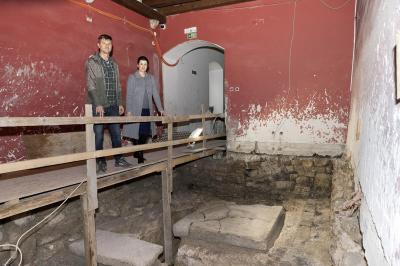 Split - Archaeologists who helped with the restoration work of the Split City Museum, one of the most important and visited museums in Croatia, located inside the Dominik Papalic palace, made a sensational discovery. Large Roman baths and mosaics were found under the building during the reconstruction of the ground floor and the installation of a lift in the Split City Museum. The ongoing works which are part of a European project called “Palace of Life, City of Change” have unearthed a valuable archaeological site boasting hitherto unseen ancient remains from the time of the construction of Diocletian’s Palace. During the planning phase of the works in the former Renaissance palace of the Papalić family (16th century), minor archaeological discoveries and as such research were expected, but then came a sensational discovery. Total Croatia News reports that “in the former museum reception, the structure of the ancient floor, underfloor heating, an opening for warm air connected to the stove, a praetorium, an opening inside the underfloor heating, and a furnace construction were all discovered. A deeper dig revealed an ancient mosaic in the southern room, followed by a continuation of the ancient wall in the central room, complete with a pool and an oil and grape press. A pool with a white mosaic floor was discovered in the northern room, next to the staircase, according to Nebojša Cingeli, the head of archaeological research for the Neir company. Nebojša Cingeli explained that the discoveries underneath the Papalić Palace are related to water because they are pools and cisterns, so it is easy to conclude “that there were once thermal baths in the northern part of Diocletian’s Palace as well”. This comes as somewhat of a surprise for both historians and archaeologists because for years it was assumed that the northern part of Diocletian’s palace housed barracks and training grounds for Diocletian’s personal guard and staff. These discoveries are expected to make it possible to obtain more information about the original floor plan of Diocletian’s Palace.
Split - Archaeologists who helped with the restoration work of the Split City Museum, one of the most important and visited museums in Croatia, located inside the Dominik Papalic palace, made a sensational discovery. Large Roman baths and mosaics were found under the building during the reconstruction of the ground floor and the installation of a lift in the Split City Museum. The ongoing works which are part of a European project called “Palace of Life, City of Change” have unearthed a valuable archaeological site boasting hitherto unseen ancient remains from the time of the construction of Diocletian’s Palace. During the planning phase of the works in the former Renaissance palace of the Papalić family (16th century), minor archaeological discoveries and as such research were expected, but then came a sensational discovery. Total Croatia News reports that “in the former museum reception, the structure of the ancient floor, underfloor heating, an opening for warm air connected to the stove, a praetorium, an opening inside the underfloor heating, and a furnace construction were all discovered. A deeper dig revealed an ancient mosaic in the southern room, followed by a continuation of the ancient wall in the central room, complete with a pool and an oil and grape press. A pool with a white mosaic floor was discovered in the northern room, next to the staircase, according to Nebojša Cingeli, the head of archaeological research for the Neir company. Nebojša Cingeli explained that the discoveries underneath the Papalić Palace are related to water because they are pools and cisterns, so it is easy to conclude “that there were once thermal baths in the northern part of Diocletian’s Palace as well”. This comes as somewhat of a surprise for both historians and archaeologists because for years it was assumed that the northern part of Diocletian’s palace housed barracks and training grounds for Diocletian’s personal guard and staff. These discoveries are expected to make it possible to obtain more information about the original floor plan of Diocletian’s Palace.
Archaeologists discovered large Roman baths under city museum in Croatia - Arkeonews
POLOGNE – 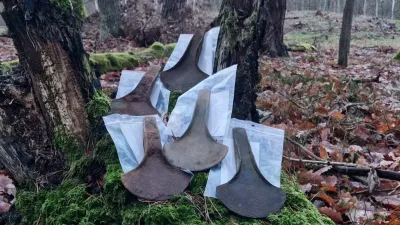 Starogard - In a recent finding announced by the Pomeranian Provincial Conservator of Monuments, five ancient bronze age axes were uncovered in the Starogard Forest District of Kociewie, Poland. These historical artifacts, dating back 3,700 to 3,100 years (1700-1300 BCE), were stumbled upon by Denis Konkol, a metal detectorist. The axes were neatly hidden just below the ground’s surface in a shallow pit. The axes, belonging to the tautušiai type connected with Baltic cultures, are likely from modern-day Lithuania or northeastern Poland. These bronze-age tools are characterized by their sizable form, a slim handle with raised edges, and a wide blade. Piotr Klimaszewski, who leads the Archaeological Monuments Department, believes these axes were probably involved in a special ritual placement or offering. This could be tied to trade activities or the religious customs of bronze age communities.
Starogard - In a recent finding announced by the Pomeranian Provincial Conservator of Monuments, five ancient bronze age axes were uncovered in the Starogard Forest District of Kociewie, Poland. These historical artifacts, dating back 3,700 to 3,100 years (1700-1300 BCE), were stumbled upon by Denis Konkol, a metal detectorist. The axes were neatly hidden just below the ground’s surface in a shallow pit. The axes, belonging to the tautušiai type connected with Baltic cultures, are likely from modern-day Lithuania or northeastern Poland. These bronze-age tools are characterized by their sizable form, a slim handle with raised edges, and a wide blade. Piotr Klimaszewski, who leads the Archaeological Monuments Department, believes these axes were probably involved in a special ritual placement or offering. This could be tied to trade activities or the religious customs of bronze age communities.
Five Bronze Age Axes Found in the Forests of Poland (greekreporter.com)
PEROU – 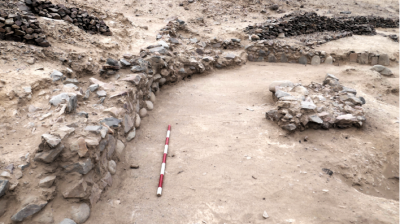 Orcona - Archaeologists in Peru recently unearthed the ruins of a sprawling complex dating back to a powerful ancient empire known as the Wari State. The team of researchers from the Autonomous University of Barcelona and the University of Almería were exploring an earlier known settlement near the town of Orcona, when they discovered something new . It was the remains of an approximately 1,000-year-old two-story building. Experts said the building dates to the Wari Empire, sometime between the seventh and 10th centuries. The approximately 1,400-square-foot building was connected to a patio with various small warehouses. The Wari Empire began expanding its control around the seventh century by establishing political centers throughout the Andean mountains and to territories along the coast and to the north, the university said. Most settlements that have been found from the empire were discovered in city-like enclaves, but the newly found ruins represent the first development in a rural region known to exist during the empire’s rule. The building’s walls were made of large stones which were then covered with adobe and plastered in white and yellow. The ground floor was preserved and had evidence of food preparation and storage. The attached patio was nearly 5,400 square feet and had storage rooms marked by walls made of large stones, according to archaeologists. Experts said the building was likely owned by a group of the ruling class who used it as a place for servants to work various artisanal jobs, food preparation and more. Although the structure is the first of its kind to be discovered, researchers had previously identified a ceramic model with the same configuration in a tomb in Peru, according to the university. Evidence at the building indicates that its construction was planned out and took a considerable amount of work.
Orcona - Archaeologists in Peru recently unearthed the ruins of a sprawling complex dating back to a powerful ancient empire known as the Wari State. The team of researchers from the Autonomous University of Barcelona and the University of Almería were exploring an earlier known settlement near the town of Orcona, when they discovered something new . It was the remains of an approximately 1,000-year-old two-story building. Experts said the building dates to the Wari Empire, sometime between the seventh and 10th centuries. The approximately 1,400-square-foot building was connected to a patio with various small warehouses. The Wari Empire began expanding its control around the seventh century by establishing political centers throughout the Andean mountains and to territories along the coast and to the north, the university said. Most settlements that have been found from the empire were discovered in city-like enclaves, but the newly found ruins represent the first development in a rural region known to exist during the empire’s rule. The building’s walls were made of large stones which were then covered with adobe and plastered in white and yellow. The ground floor was preserved and had evidence of food preparation and storage. The attached patio was nearly 5,400 square feet and had storage rooms marked by walls made of large stones, according to archaeologists. Experts said the building was likely owned by a group of the ruling class who used it as a place for servants to work various artisanal jobs, food preparation and more. Although the structure is the first of its kind to be discovered, researchers had previously identified a ceramic model with the same configuration in a tomb in Peru, according to the university. Evidence at the building indicates that its construction was planned out and took a considerable amount of work.
1,000-year-old building ruins unearthed in Peru: photo | Miami Herald
CHINE – 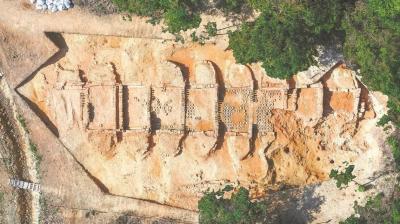
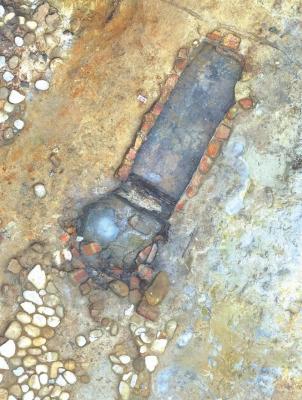
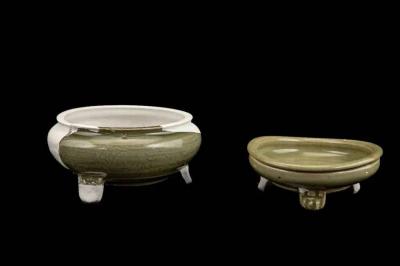 Baima - Tucked in the mountains of southeastern China sit the ruins of a large-scale manufacturing site. The centuries-old furnaces that once made iconic pottery now lie crumbling and abandoned. The ruins of the Baima kiln site were first uncovered in the 1950s, according to a Dec. 4 news release from the Institute of Archaeology at the Chinese Academy of Social Sciences via the China Archaeology Network. The systematic excavation found 21 pottery kilns primarily used for making imitation Longquan celadon, an iconic style of Chinese porcelain, the release said. The kilns, workshops and other production buildings spanned about 10 square miles. Archaeologists said the Baima kiln site functioned throughout the Ming dynasty, a period from 1368 to 1644. Several of the 400-year-old kilns were identified as semi-inverted flame dragon kilns, the release said. This is a unique type of furnace with multiple chambers built in a long, skinny line up a slope. Even ruined, the kilns are massive. Two of these semi-inverted flame dragon kilns measured about 90 feet long, archaeologists said. Excavations also uncovered a large number of pottery pieces produced by the workshop. Photos show some of these porcelain artifacts. Most of the artifacts have a jade green glaze with subtle designs. These pieces are imitating Longquan celadon. Longquan celadon is a distinctive style of porcelain with a glossy jade green glaze. Other pottery fragments from the Baima kiln site have designs with Chinese characters or orange and yellow glazes,
Baima - Tucked in the mountains of southeastern China sit the ruins of a large-scale manufacturing site. The centuries-old furnaces that once made iconic pottery now lie crumbling and abandoned. The ruins of the Baima kiln site were first uncovered in the 1950s, according to a Dec. 4 news release from the Institute of Archaeology at the Chinese Academy of Social Sciences via the China Archaeology Network. The systematic excavation found 21 pottery kilns primarily used for making imitation Longquan celadon, an iconic style of Chinese porcelain, the release said. The kilns, workshops and other production buildings spanned about 10 square miles. Archaeologists said the Baima kiln site functioned throughout the Ming dynasty, a period from 1368 to 1644. Several of the 400-year-old kilns were identified as semi-inverted flame dragon kilns, the release said. This is a unique type of furnace with multiple chambers built in a long, skinny line up a slope. Even ruined, the kilns are massive. Two of these semi-inverted flame dragon kilns measured about 90 feet long, archaeologists said. Excavations also uncovered a large number of pottery pieces produced by the workshop. Photos show some of these porcelain artifacts. Most of the artifacts have a jade green glaze with subtle designs. These pieces are imitating Longquan celadon. Longquan celadon is a distinctive style of porcelain with a glossy jade green glaze. Other pottery fragments from the Baima kiln site have designs with Chinese characters or orange and yellow glazes,
Massive 400-year-old kilns and iconic pottery found in China | Miami Herald
ITALIE – 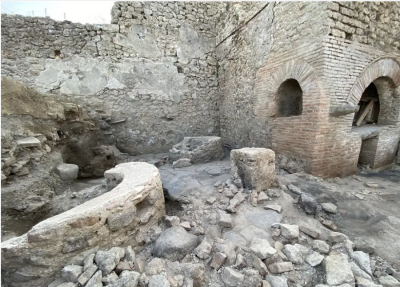
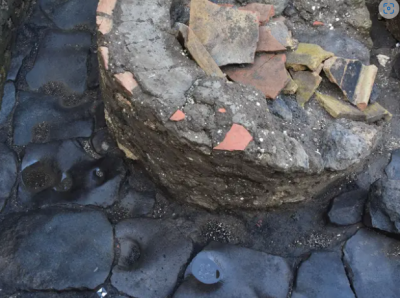
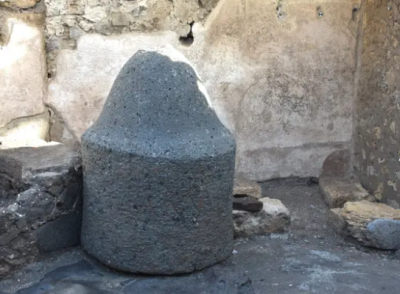 Pompéi – A bakery prison has been unearthed in the ruins of the ancient city Pompeii, archeologists said in they regard as the “most shocking side of ancient slavery”. Enslaved people were exploited to grind grains and make bread in the cramped bakery with iron-barred windows and no exit to the outside world. The bakery was found in a home as part of a larger project in the Regio IX area of the Pompeii archaeological park in southern Italy. It reveals more evidence on the daily life of Pompeii’s enslaved people who are often sidelined in history lessons of the ancient city. Indentations in the floor were also discovered, pointing to the movement of the animals who were forced to walk around blindfolded for hours, the archaeological park statement said. “It is a space in which we have to imagine the presence of people of servile status,” Pompeii’s director Gabriel Zuchtriegel said.“It is the most shocking side of ancient slavery, the one devoid of both trusting relationships and promises of manumission, where we were reduced to brute violence, an impression that is entirely confirmed by the securing of the few windows with iron bars.”The home is believed to have been undergoing renovations when Mount Vesuvius erupted in AD79, destroying Pompeii as it was submerged by volcanic ash.
Pompéi – A bakery prison has been unearthed in the ruins of the ancient city Pompeii, archeologists said in they regard as the “most shocking side of ancient slavery”. Enslaved people were exploited to grind grains and make bread in the cramped bakery with iron-barred windows and no exit to the outside world. The bakery was found in a home as part of a larger project in the Regio IX area of the Pompeii archaeological park in southern Italy. It reveals more evidence on the daily life of Pompeii’s enslaved people who are often sidelined in history lessons of the ancient city. Indentations in the floor were also discovered, pointing to the movement of the animals who were forced to walk around blindfolded for hours, the archaeological park statement said. “It is a space in which we have to imagine the presence of people of servile status,” Pompeii’s director Gabriel Zuchtriegel said.“It is the most shocking side of ancient slavery, the one devoid of both trusting relationships and promises of manumission, where we were reduced to brute violence, an impression that is entirely confirmed by the securing of the few windows with iron bars.”The home is believed to have been undergoing renovations when Mount Vesuvius erupted in AD79, destroying Pompeii as it was submerged by volcanic ash.
Archeologists unearth ancient bakery ‘prison’ in Pompeii | The Independent
JAPON – 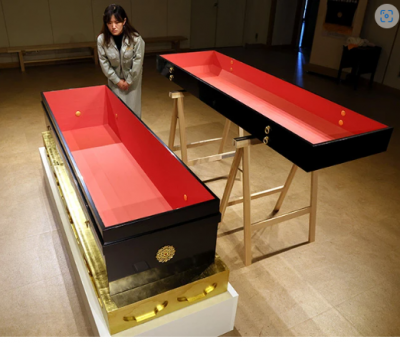 Takamatsuzuka - The occupant of an ornate stone tomb here 1,300 years ago was buried in an elaborate lacquer-coated wooden coffin with gold fittings, say researchers who used computer graphics for the task. Only fragments of the coffin, as well as decorative fittings, were found in 1972 during excavation work of the Takamatsuzuka burial mound, which dates back to the late seventh to early eighth centuries. Almost all of the attention back then was on the murals painted on the interior of the stone chamber, including one called the “Asuka Beauties.” The murals have since been designated as national treasures. On Dec. 8, the Archaeological Institute of Kashihara unveiled a reproduction of the coffin based on the latest scientific findings using computer graphics. The replica coffin made from cedar planks measures about 2 meters by about 60 centimeters with a depth of about 50 cm. The exterior is coated in black lacquer while red pigment mixed with traces of mercury was used on the interior. Gold-copper alloy fittings have been attached to the coffin which sits on a gold-plated lacquer stand.
Takamatsuzuka - The occupant of an ornate stone tomb here 1,300 years ago was buried in an elaborate lacquer-coated wooden coffin with gold fittings, say researchers who used computer graphics for the task. Only fragments of the coffin, as well as decorative fittings, were found in 1972 during excavation work of the Takamatsuzuka burial mound, which dates back to the late seventh to early eighth centuries. Almost all of the attention back then was on the murals painted on the interior of the stone chamber, including one called the “Asuka Beauties.” The murals have since been designated as national treasures. On Dec. 8, the Archaeological Institute of Kashihara unveiled a reproduction of the coffin based on the latest scientific findings using computer graphics. The replica coffin made from cedar planks measures about 2 meters by about 60 centimeters with a depth of about 50 cm. The exterior is coated in black lacquer while red pigment mixed with traces of mercury was used on the interior. Gold-copper alloy fittings have been attached to the coffin which sits on a gold-plated lacquer stand.